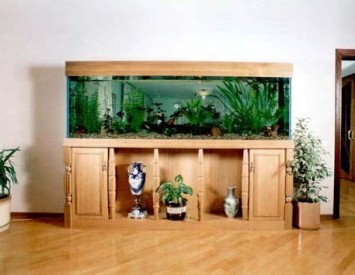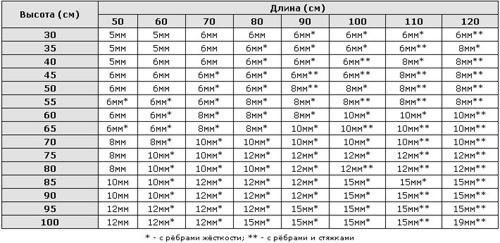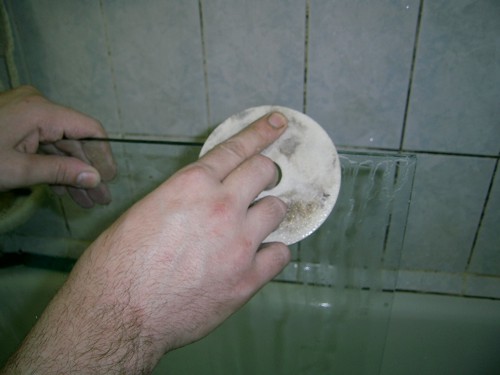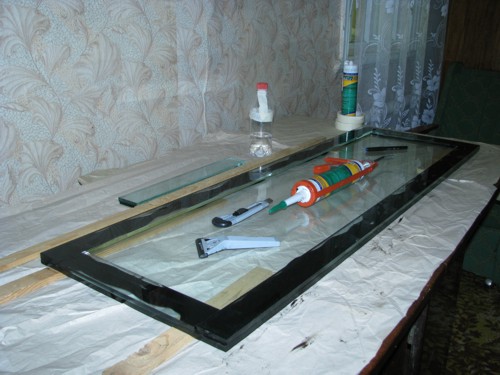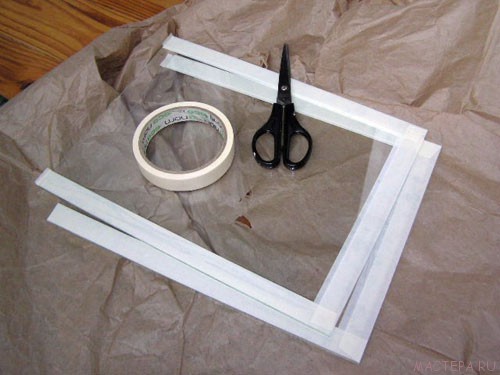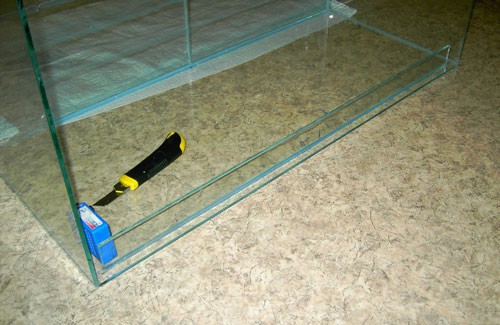You decided to get fish, but this requires an aquarium. Going to the store and buying a container is an expensive pleasure. It will be much cheaper to make an aquarium with your own hands. Moreover, you yourself will make such an aquarium that will suit you both in size and in design.
Content
Where to start, how to make an aquarium right? This question is asked by many novice aquarists. Before you go to the pet store and buy fish, as well as everything you need for the aquarium, you need to clearly understand what kind of form your mini-water will be.
Aquariums are of such forms:
- rectangular;
- round;
- oval;
- square;
- angular.
Rectangular containers are considered standard, and panoramic aquariums are considered unusual.
A round aquarium looks especially, it will be good to harmonize with any interior, but it is impossible to do it yourself, at home. To give a rounded shape to glass, special equipment is necessary.
Corner or panoramic containers can be made independently, and without special skills in working with glass. But still, if you have never done this and want to make a quality tank for fish, it is better to start with a rectangular shape. It is easier to make, and subsequently easier to serve.
Tips for professionals
Fans of aquarium exotic advise collecting a rectangular structure in the following ways:
- When the walls (glass) are based on the bottom itself.
- When the walls are located directly around the day.
Both the first and second options are considered equally durable if the technology is observed during the assembly of the structure. But, there are some deviations. So, if you decide to make an aquarium 50 or more liters, then it needs to be collected by the second method.
The optimal capacity size is 90 by 50 by 50 centimeters. This size will contain most of the varieties of fish, provided that they will be selected in size and compatibility.
Popularity is gained by models of aquariums that do not have screeds and torn off, but it will be more difficult to build such a design.
Professionals recommend placing an overflow column in the left rear corner, and its holes are at the same level.
It will also be more convenient if the upper edge of the column will be located slightly lower than the edges of the walls of the container - only 50 millimeters. Such a slight discrepancy will maintain water level slightly lower (approximately 35 millimeters) of the glass edge when the return pump starts into operation.
The material for aquariums is glass and plexiglass. From orgstepers, experts do not advise constructing aquariums, as it is cloudy over time.
The choice of glass
Perhaps one of the responsible points in creating the aquarium is the choice of glass. It is necessary to choose a certain variety, with a marking from m one to m eight. Moreover, M one will be considered the highest grade. If you want your aquarium to last a long time, choose glass not lower than the third brand. To create a container at home, a window glass is suitable, which can be purchased in any glass -breeding or in a construction supermarket.
When choosing glass, pay attention to the following moments: it should have no cracks, no scratches, nor any interspersed.
After the glass is chosen, it is necessary to determine the thickness. There are special tables to select glass thickness. When you came to the store, you have already decided on the dimensions of the aquarium. The following formula will help to calculate the size of the container: the length is multiplied by the width and height. Thus, the volume is obtained. This table will help you find out the volume of your future aquarium.
How to work with glass correctly
If you have some materials for the construction of a home aquarium, when collecting, take into account the dimensions of the glass that will serve as a bottom (more pressure will be exerted on it).
Also, if the front wall of the reservoir (face) has a large length and height, then it is necessary to use the glass of the “ten” - 10 millimeters wide. So, experts recommend in the manufacture of a house for a house with a volume of about 200 liters, with dimensions of 100 by 400 by 500 millimeters, work with glass, a thickness of at least eight millimeters.
To cut glass, the following tools are needed:
- ruler;
- marker or felt -tip pen;
- glass cutter;
- glasses on glass;
- soft fabric;
- fabric gloves.
Before starting work, the surface must be wiped from divorces and possible pollution, wait until the glass becomes dry.
With cutting glass, you must adhere to the size, the “allowances” do not need to be done.
When working with glass, you need to reduce the size of the width and length equal to the length of the double glass thickness, as well as a plus of four millimeters per glue allowances.
To make it more convenient to cut glass, it is necessary to purchase roller glass cutters. It is easier for them to work, as it glides gently on the glass, while not “jumping”. Observe maximum caution!
Working nuances:
- when cutting, take into account the thickness of the glass;
- the tank cover is also made of glass, which is glued around the perimeter with a self -adhesive ribbon;
- when working with glass cutter, it is necessary to work with pressure so that the glass breaks well, and not crumble;
- if you do not press the glass cutter to the glass, then cracks will go along it and it will be problematic to cut it;
- it is advisable to practice in advance on small scraps so as not to spoil the fragile material.
After you spent the glass cutter on the surface, you immediately need to break the glass, without waiting for it to "cool down". To do this, the glass is placed on the table so that the fault line falls on the edge of the surface and confidently breaks with the hand. Do not forget to put on gloves or wrap the brushes with a cloth.
Advice: If you purchase glass in a specialized store, you may be offered a service of cutting material, which is often already included in the purchase price. So do not refuse the services of professionals.
We proceed to gluing
After the glass cutting is produced, its edges must be processed. Remember that the circumcised edges cannot be fucked, since then it will be impossible to fasten them together. To combine joints, special silicone glue is used, which is harmless to the life of fish and other inhabitants of the aquarium.
In order for the glue not to go even smoothly, it is necessary to work with a “gun”, which will make it possible to make a thin and even adhesive seam.
How to glue the aquarium
Before working with glue, each wall of the tank must be treated with gasoline or turpentine, wiped with a soft cloth (not synthetic). Work on the table, and under the bottom of the future tank, lay the old wallpaper or several layers of the newspaper. Do not forget that when working, when the process of hardening the glue has already begun, the structure cannot be moved, so choose a convenient place where the aquarium will not interfere with anyone until completely dry.
- Apply glue (or sealant) with a thin even layer.
- Apply a sealant on the front wall along the line on which it will be attached to the bottom.
- The thickness of the sealant should not exceed the thickness of the glass.
- Make sure that the glue layer is even, without passes, as this is fraught with leakage.
- After the glue is applied, you can install the front part of the aquarium to the bottom. Try to work without pressure so that the liquid does not “get out” around.
- If the glue appeared from under the glass, do not rush to clean it right away.
- Make sure that the first sheet of glass (front part) does not remain without support, and only then proceed to gluing the following walls.
- When gluing the side panner of the aquarium, apply glue first to the ends of the side walls. Keep in mind that small aquariums are as difficult to glue as more.
About stiffeners
The ribs that give the rigidity of the structure are necessary for strength. To start this stage of work, you need to wait a day or a little more until the glue dries well. During drying, you can not move and knock on the design.
Stiffer ribs are thin strips of glass, which will additionally serve as a strengthening of the walls of the aquarium. In the presence of ribs, even with a large amount of water, the reservoir will not be transformed.
The standard strip size is not more than five centimeters, and the length is calculated based on their formula “three fourth length of the front grid”.
Experts recommend gluing the strips perpendicular to the side walls and the front wall of the reservoir, and exclusively from the side of the front and rear walls.
To attach the strips, it is necessary to lay the future aquarium on the side. Make a strip with glue and attach each in order. Leave until completely dry for a day.
After the tank dries well, the excess glue is removed with a thin sharp knife or blade on the outside.
Everything, the work on the construction of the aquarium has been completed. It remains to wait about five days until it finally dried up and only then start filling out the tank with water. In this simple case there are also nuances. Try to fill the water gradually, gently pouring it a little. After filling the reservoir to the edges, leave it for a day. If there was no leakage during this period, then it can be operated.
Often, beginner aquarists are wondering what needs to be purchased for the aquarium? To this question, you can give you an answer in the pet store in detail, but be prepared for the fact that the list will consist of ten or more points.
In these photos you can see types of aquariums:
